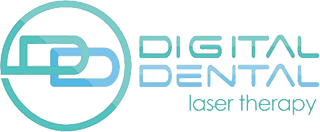Dr Paul Dixon discusses how MLS® Laser improved his patients’ pain management
Well, MLS® laser therapy is a way of treating people who have chronic pain conditions or acute pain conditions. That is a non-invasive process where you’re using the energy of light to stimulate blood supply improvements, better drainage from your lymphatic systems, it activates cell repair and reduces inflammation.
So, basically, for pain patients and dental patients who are going through painful procedures after extractions of teeth or orthodontic treatment that is uncomfortable or painful, it works really well. I’ve been using it for a number of years, and it’s a great adjunct to treating these people, and I seem to get very quick improvements in these patients. Much quicker than I would have thought was possible, and because of that I think it’s a wonderful system. It’s mainly treating people who have pain conditions, headache pain, sore muscles, sore jaws.
However, I have used it with orthodontic patients. It certainly is very effective in speeding up the movement of teeth orthodontically, and it also helps in cases where if there is soreness due to the movement of teeth, that it does reduce those levels of soreness, and that’s a very good thing to do, because, you know, you don’t want to cause pain when you’re trying to treat these people. They’re the main areas that I use it, but I think mainly in people who have jaw and neck pain. Certainly, you use it a lot on neck muscles, because they are the area where a lot of headache pain is coming from, so therefore you find that when you do those treatments, that people get a lot of relief.
When you first do the treatment, you only maybe get a moderate response after the first treatment. After about two treatments, you start to see really good improvements, and people come back, and they tell you how much better they feel, and for people who have been in chronic pain for a long time, and taking medications and pain relievers for a long time, they find it quite amazing that they can have a better night’s sleep and have less pain from something which is so simple and so non-invasive. So we do get a very good response, it’s very good.
It fits in with making any treatments that we do much more effective. If you haven’t got a laser, I think you’re not working with the ways of reducing inflammation in the system, and therefore you’re having to do more standard things, which are not as effective. So certainly, using the laser means that you can improve people’s outcomes and you can do it more effectively, so it just seems to be a really important tool to use in a dental practice.
I tell patients in shorter terms exactly what I’ve said, that it’s going to help reduce inflammation, which is causing their pain, and I think some people are going to be sceptical about that. However, if they’re willing to try it, they find that they do get success and then they become very happy to keep using it.
Obviously, in Australia, we don’t take up these things as much as maybe in other places and therefore people are unsure, but I think the research is very wide and broad, and there’s certainly no problems, because basically, everything laser does is there to help healing, it doesn’t really have any downside. I mean, there are precautions you have to take, for sure, and you have to follow those correct precautions. You can’t mix it with metals, people can’t have jewellery, if they have pacemakers. Various things like that you have to be aware of, but other than that, there aren’t a lot of things that lasers won’t help with.
Dentists come from a scientific background, and I do think they like to see the science behind things, and certainly, if they’re prepared to look at the literature, and there’s ample literature around that can be Googled, or PubMed searched, or in many ways, there’s enough literature to show that it’s very efficient and efficacious at treating these sorts of problems.
I would suggest that if they’re having patients who are needing those sorts of treatments in their practice, I think it would be just common sense to use it as a tool. It doesn’t diagnose the patient for you, but once you’ve diagnosed the problem, it certainly is helpful in resolving any issues in regards to inflammation. So, it’s definitely useful to use.
We have patients who have had severe pain and chronic pain for many years, and using laser as part of an overall process, not on its own, but as part of an overall process of treating the condition, tremendous success in reducing headache pain, and better sleep, and a better feeling of well-being.
So, without doubt, I’ve seen that happen and it certainly makes you very pleased that you can help people that way, which I don’t think would be as effective without a laser, in my opinion anyway.
Get in touch to book a demonstration
